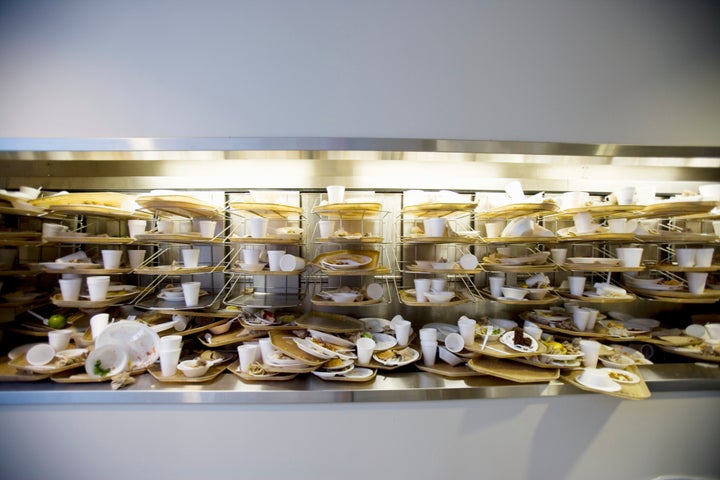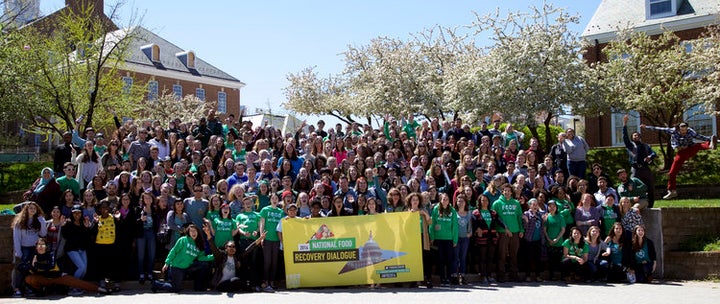The time you spend in college may be among the most exciting, transformative years of your life. Unfortunately, they're probably some of the most wasteful as well.
Studies have shown that a single college campus ends up trashing 169,000 pounds of perfectly edible food every year. And students' eating habits certainly aren't helping. According to Recycling Works, a government-run waste program in Massachusetts, the average student who lives on campus throws away 141 pounds of uneaten food annually.
That's like grilling up 564 quarter pound burgers, only to toss them directly into a landfill. Considering the fact that one in six people in the country struggles to find their next meal, that kind of waste is unacceptable.
Now, students are finally taking a stand against their wasteful ways.
Last year, The Food Recovery Network, a nationwide organization run by students, turned 388,840 pounds of campus-produced food waste into more than 300,000 meals for those in need.
It's a simple process, and it's having a major impact.

At least once a week, FRN volunteers go into college dining halls or kitchens, pack up leftover food and deliver it directly to local soup kitchens or homeless shelters for those in need.
To ensure that the food is being handled properly, Sodexo --a food management company which manages dining services at 50 of the colleges where FRN has been established -- trains all of the volunteers in food safety and handling procedures.
Shondra Jenkins, director of community relations for Sodexo, told BioCycle magazine that even though FRN is a young organization, it is "getting this generation actively involved in ending hunger."
FRN was founded in the fall of 2011, after Ben Simon and a group of friends at the University of Maryland noticed that trays of leftover food from the dining hall were being thrown away at the end of the day.
Before the leftovers could be tossed, the students asked the hall manager if they could donate the food instead -- and the answer was yes.
"Ever since then, it was like, 'Dude, what if this was at every college?'" Simon, who was the organization's executive director before leaving for his new project, Imperfect Produce, said in a 2014 interview with NationSwell.
Currently, FRN is active on 186 college campuses across the country. It has established partnerships with food management giants, including General Mills and Sodexo, which awarded FRN a $150,000 grant in 2013.
FRN even expanded its reach last year by launching a Food Recovery Certification program to recognize businesses that honor its mission. So far, it's certified 60 establishments in 24 states, including the corporate campuses of PayPal, Adidas, Nordstroms and Starbucks.
And, in just four years, the nationwide network has prevented more than 1.2 million pounds of food from being thrown away.

With new campuses joining the movement all the time, FRN seems poised to make a lasting impact on both food waste and national hunger.
Last Friday, volunteers with one of the network's newest chapters at the University of Hawaii at Manoa delivered 227 pounds of sandwiches, burgers, pulled pork and noodles to Honolulu's Institute of Human Services.
Hawaii has the highest rate of homelessness per capita of any state in the nation so the donations were definitely needed and appreciated.
"It can't get any better than this," Kimo Carvalho, IHS spokesman, said of FRN's efforts, "recovering perfectly healthy food that would otherwise go to waste to feed hungry homeless families and individuals."
While FRN is definitely doing it's part, the federal government is also catching on to the larger problem of food waste.
With nearly 40 percent of the American food supply thrown away annually, the United States Department of Agriculture and the Environmental Protection Agency vowed in September to cut that waste in half by 2030.
It's a lofty goal, but FRN is living proof that long-term change can grow from community effort and a simple idea.

